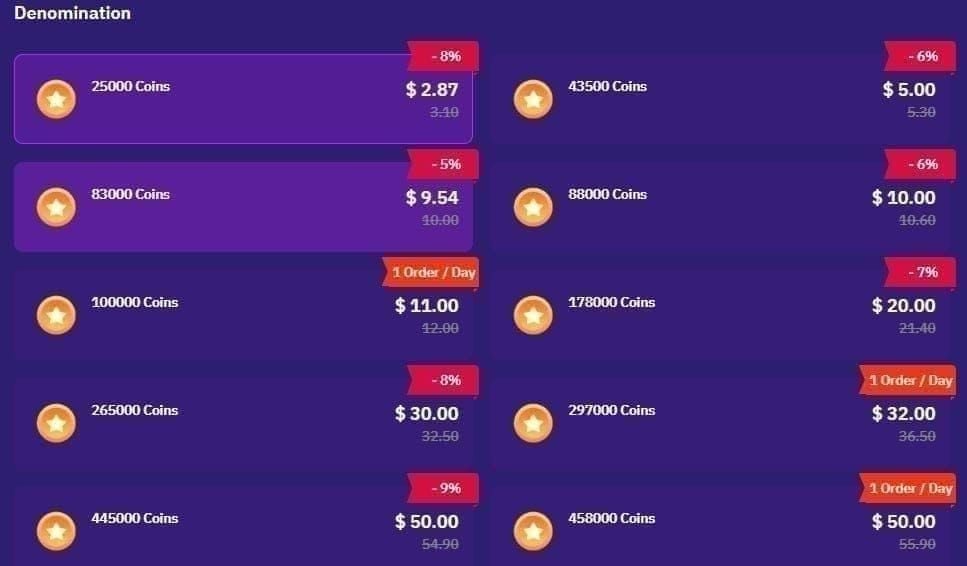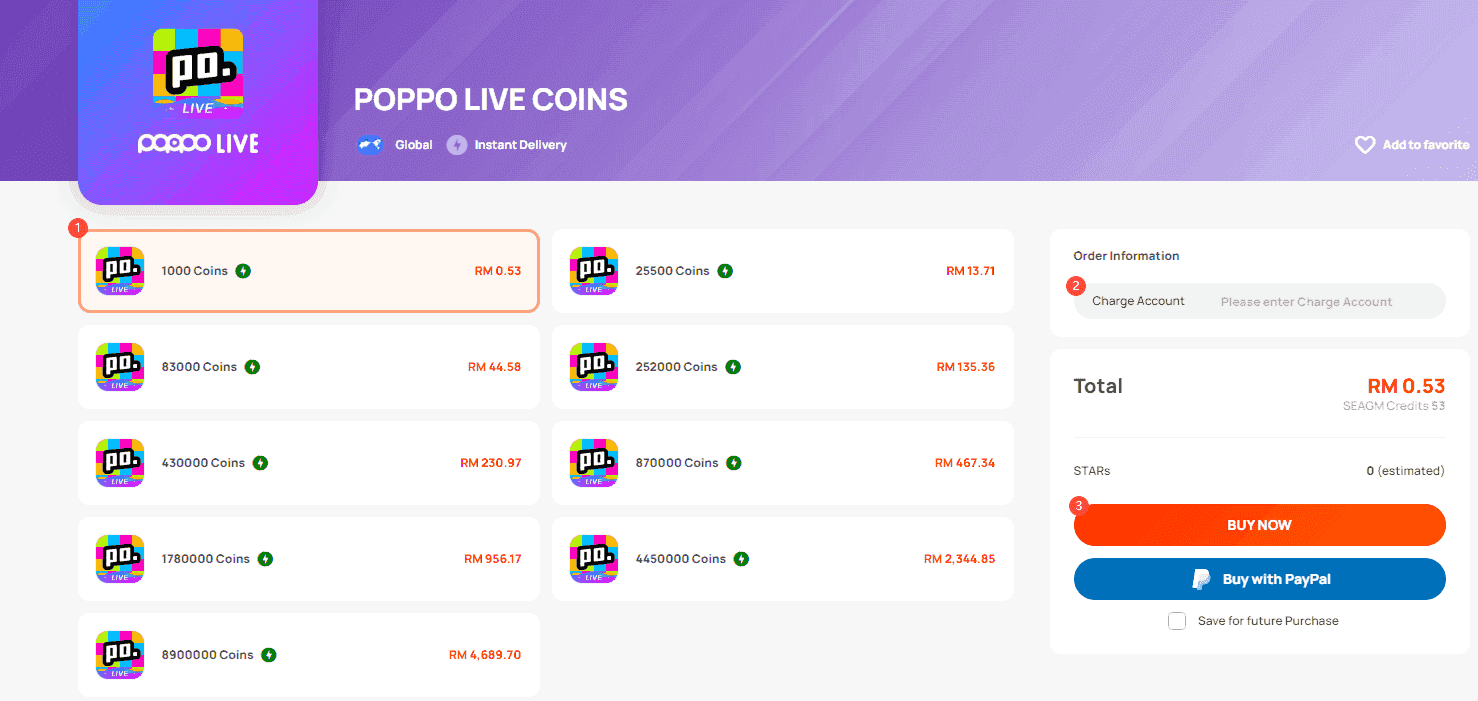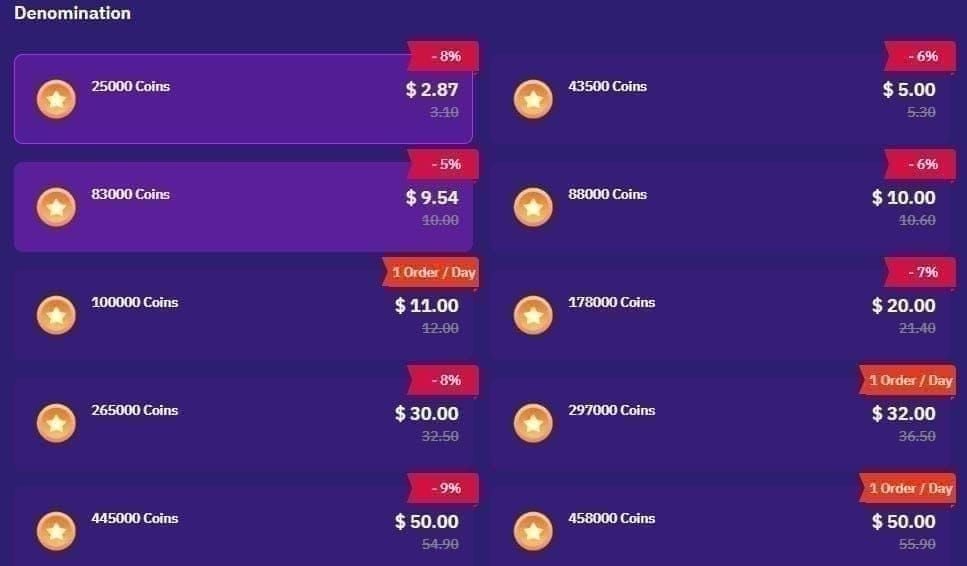Here's what caught my attention after digging through the numbers: both iPhone and Android platforms charge identical base prices for Poppo Live coins (9,460 coins per dollar after that hefty 30% commission), but Android consistently outperforms with 10-20% faster processing, lower foreign transaction fees (1-3% vs 2-3%), and notably higher success rates (80% vs 70%). What really surprised me? Regional taxes can absolutely demolish your budget—Philippines hits you with 12% VAT, Nepal with 13%, and US states tack on another 5-10%. Then there are those sneaky hidden fees that can bump your total costs up by 5-15%.
Poppo Live Coins: Platform Economics Overview
What Are Poppo Live Coins
Think of Poppo Live coins as your gateway currency. They're what you'll spend on gifts, VIP memberships, and all those premium features that make the platform tick. Here's where it gets interesting for content creators—streamers pocket a 50% cut after platform fees, with 10,000 points translating to $1 USD.

VIP memberships? They'll run you 10,000-30,000 coins monthly. The break-even sweet spot sits around 15,000+ coins if you're a regular user. One thing that always bugs me about virtual currencies—these coins expire after 12 months and you can't transfer them between accounts. Seems unnecessarily restrictive, honestly.
Platform Revenue Models
Both iOS and Android slam you with that uniform 30% commission on all in-app purchases. That's industry standard, but it still stings—reducing your effective coin yield to 9,460 coins per dollar spent.
Now here's where things get interesting: Buy Poppo Live coins iPhone through BitTopup offers 6-70% savings compared to in-app purchases. That's not a typo. Instant delivery, transparent pricing, no hidden platform commissions. The official 2025 rates show 83,000 coins for $10, scaling all the way up to 9,100,000 coins for $1,000. Bulk packages can drop your costs from $0.0115-0.0120 per coin down to $0.0110 per coin.
Why Prices Vary Between Platforms
This is where the technical differences actually matter for your wallet. Android processes transactions 10-20% faster using HCE technology, while iPhone relies on Secure Element with Face ID authentication—secure, but slower.
The real kicker? Foreign transaction fees. Android charges 1-3% versus iPhone's 2-3%. Doesn't sound like much, but it adds up fast. Currency conversion hits both platforms equally at 2-4%. Processing success rates heavily favor Android at 80% versus iPhone's 70%. For transactions over $50, iPhone experiences 30% decline rates compared to Android's 20%. That's a significant difference when you're trying to make larger purchases.
iPhone vs Android: Base Pricing Structure
iOS App Store Pricing Tiers
iPhone packages start small—2,100 coins for $0.29—and scale up to 210,000 coins for $29.99. You'll need iOS 12.0 or later, which shouldn't be an issue unless you're running ancient hardware.

Apple Pay integration is lightning fast (sub-1-second authentication), but here's the catch—it adds 2.9-4.4% processing fees. Bank transfers take 1-3 business days, which feels sluggish compared to other options. First-time bonuses do sweeten the deal with 8-12% additional coins. For example, that $10 purchase might net you 87,000 instead of 83,000 coins.
Google Play Store Pricing Model
Android's range is broader: 83,000 coins for $10 up to 9,100,000 coins for $1,000. Device compatibility goes back to Android 5.0+ (basically any phone from 2014 onwards). Google Pay authentication takes 1-3 seconds with—and I appreciate this—transparent fee breakdowns right at checkout.
Micro-deposit testing is a game-changer here, reducing transaction declines by 20%, especially for international purchases. End-of-month bonuses (25th-31st) offer that same 8-12% additional coins, and they stack with promotional periods.
Platform Commission Differences
Despite identical 30% commissions, the user experience differs dramatically. iPhone displays prices with fees included but lacks transparency about what you're actually paying for. Android provides detailed fee structures at checkout—much more user-friendly approach.
Both platforms yield identical base rates: 19,500 coins for $2.99, 65,000-70,000 for $9.99, and 195,000-210,000 for $29.99. But here's the insider tip: web-based options provide up to 16% more coins. That means 500,000 coins for $50 versus the official 430,000 coins. The math is pretty compelling.
Regional Tax Impact on Poppo Coin Costs
VAT/GST Variations by Country
This is where things get wild. Philippines hits you with 12% VAT—7,000 coins cost PHP 33 ($0.58 USD), yielding 12,000+ coins per dollar. Nepal applies 13% VAT with 10,000 coins for NPR 150 ($1.12 USD), maintaining 8,900 coins per dollar. European Union markets? Prepare for 15-25% VAT depending on which member state you're in.

Poppo Live Android top up Australia through BitTopup sidesteps these complex regional tax calculations while offering competitive rates. Sometimes the simplest solution is the best one.
Local Tax Calculations
United States sales taxes add 5-10%, though you catch a break in Oregon, Montana, New Hampshire, and Delaware. Nigerian pricing shows 10,000 coins for NGN 1,690 ($1.06 USD), maintaining that 9,460 coins per dollar baseline. Pakistan follows similar patterns with PKR equivalents—both implementing approximately 13% VAT-equivalent charges.
UK and EU pricing creates 15-25% premiums over baseline costs. It's painful, but that's the reality of regional taxation.
Tax-Inclusive vs Tax-Exclusive Pricing
Asian markets display tax-inclusive pricing. Philippines' PHP 33 for 7,000 coins includes that 12% VAT upfront. Larger packages like 700,000 coins for PHP 3,290 ($57.88) maintain consistent tax integration—no surprises at checkout.
US and European markets show tax-exclusive pricing with additions at checkout. Pro tip: quarterly bulk purchases save 15% versus monthly buying patterns, which can offset regional tax disadvantages through volume discounts.
Real Cost Breakdown: Country-by-Country Analysis
United States Pricing Comparison
US baseline pricing sits at $0.01-$0.012 per coin for standard packages. Small packs yield $0.0115-0.0120 per coin while bulk packages reduce costs to $0.0110 per coin. State sales taxes add 5-10% except in those tax-free states I mentioned.
iPhone users face 2-3% foreign transaction fees plus 2.9-4.4% credit card processing. Android users benefit from 1-3% foreign fees. Real costs reach $0.0130-0.0140 per coin including all fees—that's the number that actually matters.
European Union Markets
EU pricing mirrors US rates plus that brutal 15-25% VAT. Base packages like 65,000 coins for $9.99 become €11-12 after VAT and conversion. Brexit impacts UK pricing separately, with pound sterling fluctuations affecting real costs by 5-15%.
Silver lining? EU consumer protection laws provide 48-hour refund windows with 2-3 days resolution time.
Asian Pacific Regions
This is where the value really shines. Philippines offers 7,000 coins for PHP 33 ($0.58), yielding 12,000+ coins per dollar. Larger packages like 3,500,000 coins for PHP 22,450 ($394.96) maintain 40-70% savings versus US rates.
Nepal provides 10,000 coins for NPR 150 ($1.12), while 1,000,000 coins cost NPR 16,210 ($121.11). GCash and Maya in Philippines offer 4-6% cashback, while eSewa and Khalti in Nepal provide similar benefits. These local payment methods are absolute game-changers.
Other Major Markets
Nigeria and Pakistan maintain global benchmark pricing at 9,460 coins per dollar, with 10,000 coins costing approximately $1.06 in local currency. Canadian and Australian markets follow US pricing with 10-15% premiums due to exchange rates.
My 2025 prediction? Asian markets will see 20-30% lower pricing through increased subsidies, while Western markets remain stable around $0.01 per coin.
Hidden Fees and Additional Charges
Payment Processing Fees
Credit card processing adds 2.9-4.4% regardless of platform choice. International SWIFT fees range 3-7% for bank transfers—ouch. Android's micro-deposit testing reduces decline-related fees by 20%, while iPhone's higher decline rates (30% for $50+ transactions) trigger reprocessing charges.
Timing matters too. Off-peak recharges reduce delays by 5%.
Currency Conversion Costs
Foreign exchange fees add 2-4% to international transactions. Android's 1-3% foreign fees compare favorably to iPhone's 2-3%. Currency fluctuations create 5-10% variations—something you can't really control but should be aware of.
Cryptocurrency integration in 2025 promises to eliminate 2-5% conversion fees entirely. Local payment methods like UPI in India or GCash in Philippines avoid conversion fees altogether. Android's broader support provides 10% fewer transaction issues.
Bank and Card Charges
International card usage triggers foreign transaction fees of 1-3% on top of platform charges. Bank transfer options take 1-3 business days but provide lower fees than instant card payments.
Google Pay's micro-deposit system accelerates processing while maintaining lower costs. Refund processing takes 48 hours with 2-3 days resolution time. Just remember—no-refund policies kick in post-delivery.
Platform-Specific Purchase Process
iOS Purchase Flow and Costs
iPhone users access purchases through 'Me' > 'Wallet' within the 268MB app (requires iOS 12.0+). Face ID authentication completes in under 1 second via Apple Pay.

The process is straightforward: 1) Open app, 2) Navigate to 'Me' > 'Wallet', 3) Select package, 4) Authenticate with biometrics, 5) Receive coins within 5 minutes. iPhone's Secure Element ensures PCI DSS compliance but contributes to those 30% decline rates for $50+ transactions.
Android Purchase Methods
Android users navigate Profile > Recharge supporting Android 5.0+ across broader device compatibility. Fingerprint authentication takes 1-3 seconds via Google Pay with transparent fee breakdowns—much more informative than iPhone's approach.
Process: 1) Open app, 2) Go to Profile > Recharge, 3) Select package, 4) Authenticate with fingerprint/PIN, 5) Use micro-deposit verification. Android's HCE technology enables 10-20% faster bulk processing with 80% success rates.
Alternative Payment Options
Web-based alternatives bypass that 30% platform commission entirely, providing 6-70% savings with up to 16% more coins per dollar. BitTopup offers optimal web-based purchasing with instant delivery and transparent pricing.
Cryptocurrency integration emerging in 2025 will eliminate conversion fees. Early adopters should expect 2-5% additional savings through crypto payments.
Cost Optimization Strategies
Best Platform Selection Tips
For purchases under $10, platform choice matters less due to minimal fee differences. Larger purchases favor Android due to 10-20% faster processing, lower foreign fees, and higher success rates.
I follow the 80/20 rule: 80% web purchases and 20% in-app for convenience. This saves 16-20% on $50+ spending. First-time bonuses provide 8-12% additional coins regardless of platform.
Timing Your Purchases
Black Friday provides 15-25% bonus coins. Christmas/New Year adds 10-15%. Mid-month promotions give 5-10%. Official promotions from June 23 to October 31, 2025, offer 20% off bundles with 21,000+ coins.
End-of-month Android bonuses (25th-31st) provide 8-12% additional coins. Currency timing affects international purchases by 5-10%—Asian currency strengthening provides additional savings.
Bundle vs Individual Purchases
Bulk purchasing reduces per-coin costs from $0.0115-0.0120 to $0.0110 for large packages. Quarterly bulk purchases save 15% versus monthly patterns. Break-even sits at 15,000+ coins monthly for VIP subscribers.
Don't forget daily free coin collection—400 coins via treasure boxes plus 20,000 points (~$2 equivalent). This reduces paid requirements by 20-50%.
Case Studies: Real User Cost Comparisons
Small Purchase Scenarios
$10 purchase yields 83,000 coins officially. US iPhone users pay $10 + 5-10% sales tax + 2-3% foreign fees + 2.9-4.4% processing, totaling $11.20-12.40 ($0.0135-0.0149 per coin).

Android users pay $10 + 5-10% tax + 1-3% foreign fees, totaling $10.60-11.30 ($0.0128-0.0136 per coin). Philippine users get 70,000 coins for PHP 329 ($5.79), yielding 12,000+ coins per dollar with 40-70% savings versus US rates. The difference is staggering.
Large Bundle Comparisons
$100 bulk purchases provide 870,000 coins officially. US iPhone users face $113.50 total costs ($0.0130 per coin), while Android users pay $109.50 ($0.0126 per coin), saving $4 per $100.
Web alternatives provide 500,000 coins for $50 versus official 430,000—that's 16% additional value with effective costs of $0.0090-0.0100 per coin.
Long-term Cost Analysis
Annual $500 spending shows iPhone users paying $567.50 total for 4,350,000 coins, while Android users pay $547.50, saving $20 annually. Web-based purchasing provides 5,000,000+ coins through bulk discounts, representing 15% additional coins worth $75+ in platform value.
VIP subscribers achieve effective costs below $0.0100 per coin consistently through combined strategies.
2025 Trends and Predictions
Expected Price Changes
Asian markets will see 20-30% price reductions through increased subsidies and regional competition. US and European markets remain stable around $0.01 per coin baseline.
Platform competition will drive fee reductions. Web alternatives are expanding market share through continued 6-70% savings. Cryptocurrency integration will eliminate 2-5% conversion fees, with broader adoption reducing overall market costs by 10-15%.
New Payment Methods
2025 introduces expanded cryptocurrency options, local payment integrations, and improved bulk purchasing systems. Micro-payment systems will reduce minimum purchase requirements enabling flexible spending patterns.
Version updates like 2.9.9 will improve bulk transaction reliability, reducing decline rates and processing delays—benefiting both platforms.
Platform Policy Updates
Commission structures may face regulatory pressure, potentially reducing that universal 30% platform fee. Regional compliance requirements will increase, with platforms adapting pricing to local regulations.
Consumer protection laws will strengthen refund policies and fee disclosure requirements. This benefits users through improved transparency across both platforms.
Frequently Asked Questions
Do iPhone and Android have different base prices for Poppo coins? Nope, both platforms charge identical base prices (9,460 coins per dollar after that 30% commission). Differences arise from platform-specific fees—Android offers 1-3% foreign transaction fees versus iPhone's 2-3%, plus faster processing and higher success rates.
Which platform offers the cheapest Poppo coins overall? Android provides marginally lower costs due to reduced foreign fees and fewer transaction issues. But honestly? Web alternatives offer 6-70% savings compared to both platforms. For in-app purchases, Android saves 5-9% on small purchases and $4 per $100 on bulk orders.
How do regional taxes affect my Poppo coin costs? Regional taxes vary dramatically: US adds 5-10% sales tax, Philippines includes 12% VAT, Nepal applies 13% VAT, and EU markets add 15-25%. Asian markets often provide the best value despite taxes—Philippines offers 40-70% savings versus US rates.
What hidden fees should I expect when buying Poppo coins? Hidden fees include payment processing (2.9-4.4%), currency conversion (2-4%), and foreign transaction fees (1-3% Android, 2-3% iPhone). Combined, these can add 5-15% to your total cost beyond displayed prices. Always factor these in.
When is the best time to buy Poppo coins for maximum savings? Optimal timing includes Black Friday (15-25% bonus), end-of-month for Android users (8-12% bonus), and official promotions from June 23-October 31, 2025 (20% off). Combining promotional periods with bulk purchases maximizes savings.
Can I save money by using web alternatives instead of mobile apps? Absolutely. Web alternatives bypass that 30% platform commission, providing up to 16% more coins per dollar spent. For example, 500,000 coins cost $50 through web versus official 430,000 coins. The savings are substantial for any purchase size.

